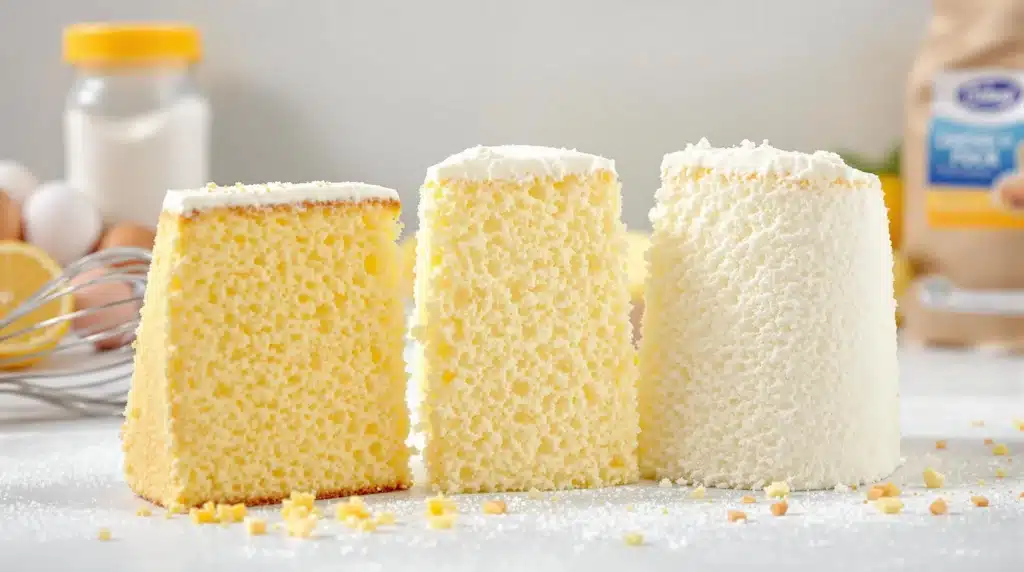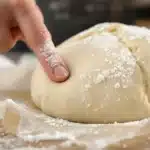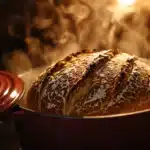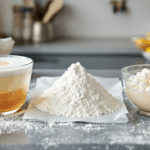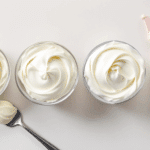Imagine the ethereal lightness of an Angel Food cake dissolving on your tongue, the delicate springiness of a classic Genoise ready to soak up syrup, or the moist, airy tenderness of a Chiffon cake. These cakes represent a distinct and beloved category in the pastry world: sponge cakes. Unlike their richer, denser cousins (butter cakes), sponges achieve their characteristic loft and delicate structure through a fascinating interplay of ingredients and techniques – a true exercise in cake chemistry.
For the aspiring pastry baker, mastering sponge cakes can feel like unlocking a special achievement. They often have fewer ingredients than butter cakes, yet their success hinges entirely on proper technique. Common pitfalls include dense, rubbery textures, cakes that collapse dramatically after leaving the oven, or a dry, disappointing crumb. The key to avoiding these issues lies in understanding the science at play – how eggs create lift, how flour provides structure without toughness, and how gentle handling preserves the delicate balance. Let’s delve into the chemistry that builds a perfect sponge cake crumb.
What Defines a Sponge Cake? (And How it Differs from Butter Cake)
Sponge cakes form a distinct category primarily defined by their leavening method and fat content:
- Primary Leavening Source: The vast majority of their lift and airy texture comes from air meticulously incorporated into eggs (either whole eggs, egg yolks, or most dramatically, egg whites) during the mixing process. Chemical leaveners like baking powder or soda play a minor role, if any, unlike in most butter cakes.
- Fat Content: Traditional sponge cakes contain very little or no added fat (like butter or oil). Classic examples include the fat-free Angel Food cake and the traditional Genoise (which might contain a small amount of melted butter added at the very end, primarily for flavor and moisture). The Chiffon cake is a notable hybrid, incorporating vegetable oil for added moistness and tenderness while still relying heavily on egg foam for lift.
- Resulting Texture: This low-fat, high-aeration approach results in cakes that are significantly lighter, airier, and more ‘spongy’ or springy in texture compared to butter cakes. They might taste less rich but often have a delicate melt-in-the-mouth quality. Their porous structure also makes them excellent canvases for absorbing soaking syrups, liqueurs, fruit juices, or pairing with rich creams and fillings.
Contrast with Butter Cakes: Butter cakes (like pound cake or standard birthday layer cakes) typically rely on the creaming method (beating softened butter and sugar together) for some initial aeration, but get most of their lift from chemical leaveners. Their significant butter content gives them a richer flavor, a denser (though hopefully still tender) crumb, and a moister mouthfeel.
The Science of Sponginess: Key Chemical & Physical Principles
Achieving that signature light and airy sponge structure relies on successfully managing aeration and then setting that structure during baking.
1. The Aeration Powerhouse: Eggs! Eggs are the undisputed stars of sponge cakes, primarily for their incredible ability to trap air when beaten.
- Whipping Whole Eggs or Yolks (e.g., Genoise): When whole eggs (or sometimes just yolks) are beaten extensively with sugar, usually over gentle heat (like a double boiler) to warm them slightly, two things happen: the mechanical action incorporates millions of tiny air bubbles, and the egg proteins begin to slightly denature (unfold). The sugar dissolves and helps to stabilize this foam, preventing the air bubbles from collapsing too quickly. This voluminous foam provides the primary leavening.
- Whipping Egg Whites (e.g., Angel Food, Chiffon): Egg whites are mostly water and proteins (like albumin). When whipped, these proteins unfold and create an intricate mesh that traps air bubbles very effectively, allowing the whites to increase in volume dramatically (up to 8 times!). Adding sugar during whipping stabilizes this delicate protein network, making the foam stronger and less prone to weeping or collapsing. This incredibly light foam is the sole leavener in Angel Food cake and a major contributor in Chiffon cake. (Fat is the enemy here – even a speck of yolk can prevent whites from foaming properly).
2. Structural Support: Setting Proteins & Starches Creating the foam is only half the battle; that airy structure needs to be solidified during baking.
- Egg Protein Coagulation: As the cake batter heats up in the oven, the egg proteins (both yolk and white) that were unfolded during whipping begin to coagulate – they link together and solidify, forming the permanent structural network of the cake around the air bubbles created earlier.
- Flour’s Role – Starch Gelatinization & Minimal Gluten: Flour contributes crucial structure, primarily through its starch content. As the batter heats, starch granules absorb the available liquid (from eggs, milk, or water) and swell, eventually bursting and thickening the batter – a process called gelatinization. This helps set the cake’s structure alongside the coagulating egg proteins. Importantly, gluten development is actively minimized in most sponge cakes. We want tenderness, not chewiness. This is achieved by:
- Using low-protein cake flour.
- Employing very gentle folding techniques to incorporate the flour, minimizing agitation that would develop gluten strands.
3. Tenderness Factors: Since sponge cakes typically lack the tenderizing effect of significant fat, their tenderness comes from other factors:
- High Sugar Content: Sugar is hygroscopic (attracts water) and interferes with both gluten development and starch gelatinization by competing for water, leading to a more tender crumb.
- Aeration: The large volume of trapped air naturally creates a very light, tender bite.
- Low-Protein Flour: Cake flour’s lower gluten potential results in less structure and more tenderness.
- Gentle Mixing: Avoiding over-mixing prevents toughness from gluten development.
- (Oil in Chiffon): The added oil in Chiffon cakes specifically boosts tenderness and moistness by coating flour proteins.
Ingredient Spotlight: Their Roles in Sponge Chemistry
Let’s look closer at how each key ingredient functions:
- Eggs: Provide LEAVENING (foam), STRUCTURE (coagulating proteins), MOISTURE, richness/flavor/color (yolks), and binding. Using room temperature eggs generally yields better volume when whipping whole eggs or yolks. Separating cold eggs is easier. Absolute cleanliness (no fat) is vital for whipping whites.
- Sugar (Granulated/Caster/Superfine): Provides SWEETNESS, TENDERNESS (interferes with gluten/starch), STABILIZES egg foams (prevents collapse, allows for greater volume), aids BROWNING. Finer crystals (caster/superfine) dissolve more easily and create finer foams.
- Flour (Typically Cake Flour): Provides STRUCTURE through starch gelatinization. Cake flour, with its lower protein content (less gluten potential), is strongly preferred for achieving the desired TENDERNESS in sponge cakes. It must be sifted (often multiple times with other dry ingredients) and folded in gently to maintain aeration.
- Liquid (Water/Milk – if used): Provides MOISTURE for starch gelatinization and contributes to steam (a minor leavening factor). Used in Chiffon cakes and sometimes Genoise; absent in Angel Food.
- Fat (Vegetable Oil in Chiffon; Melted Butter sometimes in Genoise): Primarily adds MOISTURE and TENDERNESS by coating flour proteins and interrupting structure formation. Oil provides a very moist crumb in Chiffon cakes. A small amount of melted butter folded carefully into Genoise adds flavor and slight richness but can slightly reduce volume if not done properly. Angel Food is always fat-free.
- Acid (Cream of Tartar): Almost always used when whipping egg whites for Angel Food or Chiffon cakes. It’s an acid that STABILIZES the egg white foam by strengthening the protein network, helping it achieve maximum volume and preventing it from easily collapsing or weeping.
- Chemical Leaveners (Baking Powder/Soda): Generally absent in traditional sponge cakes like Angel Food and Genoise, which rely solely on air beaten into eggs. Some modern sponge recipes, particularly Chiffon cakes, may include a small amount of baking powder as extra “insurance” for a consistent rise.
- Flavorings: Vanilla extract, almond extract, citrus zest, etc., are added for flavor. Extracts are often folded in at the end to prevent deflating the foam. Zest can be incorporated earlier.
Key Techniques for Sponge Success
Mastering sponge cakes often comes down to executing these techniques correctly:
- Proper Egg/White Whipping: This is fundamental. Follow recipe instructions precisely regarding whipping speed, duration, and visual cues.
- Whole Eggs/Yolks (Genoise): Often beaten with sugar over warm water (bain-marie) until significantly thickened, pale, and reaches the “ribbon stage” (a ribbon of batter falling from the whisk stays visible on the surface for a few seconds).
- Egg Whites (Angel Food/Chiffon): Whip in a scrupulously clean, grease-free bowl until desired peaks form (often soft peaks before adding sugar, then stiff, glossy peaks after sugar is added). Cream of tartar is usually added early. Sugar must be added gradually to stabilize. Don’t under-whip (poor volume) or over-whip (foam becomes dry, lumpy, and unstable).
- Gentle Folding: This is where many sponges fail. Once you have your beautiful, airy foam, dry ingredients (and potentially liquids or melted fat) must be incorporated without deflating that hard-earned volume.
- Use a large, flexible spatula.
- Sift dry ingredients over the foam (often in 2-3 additions).
- Use a cutting and folding motion: cut vertically through the center, scrape across the bottom, lift, and gently fold the batter over itself. Rotate the bowl a quarter turn and repeat.
- Fold only until no streaks of dry ingredients remain. It’s better to have a tiny streak than to over-fold and lose all the air.
- Correct Pan Preparation: This varies by sponge type!
- Angel Food & often Chiffon (in tube pans): Use an ungreased tube pan with a removable bottom. The ungreased sides allow the delicate batter to cling and climb up the pan walls as it bakes, providing crucial support.
- Genoise & other sponges: Typically baked in pans lined with parchment paper on the bottom and sometimes greased and floured sides (follow recipe).
- Appropriate Baking: Bake immediately after folding is complete, as the foam starts to lose volume over time. Use the correct oven temperature (usually moderate) specified in the recipe. Bake until the cake springs back when lightly touched and a wooden skewer inserted into the center comes out clean. Avoid opening the oven door unnecessarily, especially during the first half of baking.
- Specific Cooling Method: How you cool a sponge cake is critical to prevent collapse!
- Angel Food & Chiffon (in tube pans): MUST be cooled upside down. Immediately invert the tube pan onto a wire rack (many have “feet” for this) or over the neck of a sturdy bottle. Let it hang completely cool (several hours) before attempting to release it. This uses gravity to keep the delicate structure stretched out while it fully sets, preventing collapse.
- Genoise & other sponges: Usually cooled upright in the pan for a few minutes, then inverted onto a wire rack to cool completely.
Common Sponge Cake Issues & Their Chemistry
- Dense / Rubbery Cake: Likely caused by over-folding the batter (developing gluten, deflating foam), under-whipping the eggs/whites (insufficient aeration), or possibly oven temperature too low initially.
- Cake Collapsed: Often due to under-baking (structure wasn’t fully set), opening the oven door too early (causing temperature shock), unstable egg foam (over/under-whipped), or improper cooling (not inverting Angel/Chiffon).
- Dry Crumb: Usually over-baking is the culprit. Could also be slightly unbalanced ingredient ratios or, paradoxically, sometimes over-whipped egg whites can lead to a texture perceived as dry. Genoise, being fat-free, naturally benefits from a soaking syrup after baking.
- Excessive Shrinkage: Greasing the pan sides (when not supposed to, for Angel/Chiffon) prevents clinging/climbing. Over-baking can also cause shrinkage.
- Dense Layer at Bottom: Indicates heavier ingredients (like flour) weren’t folded in properly and sank, or the egg foam was partially deflated before baking. Ensure thorough but gentle folding.
Conclusion: Mastering the Airy Crumb
Sponge cakes, in their various forms, represent a pinnacle of light, airy baking. Their success lies not in complex ingredient lists, but in the precise execution of techniques rooted in basic chemistry – primarily the magic of aerating eggs and gently setting that structure with flour starches and egg proteins, all while minimizing gluten development.
By understanding the crucial roles of whipping eggs to the correct stage, the critical importance of gentle folding, the necessity of specific pan preparations and cooling methods (especially for Angel Food and Chiffon), and the impact of ingredient temperatures and types (like low-protein cake flour), you gain the knowledge needed to troubleshoot issues and consistently achieve success. While they demand care and precision, mastering the science behind sponge cakes rewards you with incredibly light, tender results perfect for soaking, filling, and creating truly elegant desserts.

